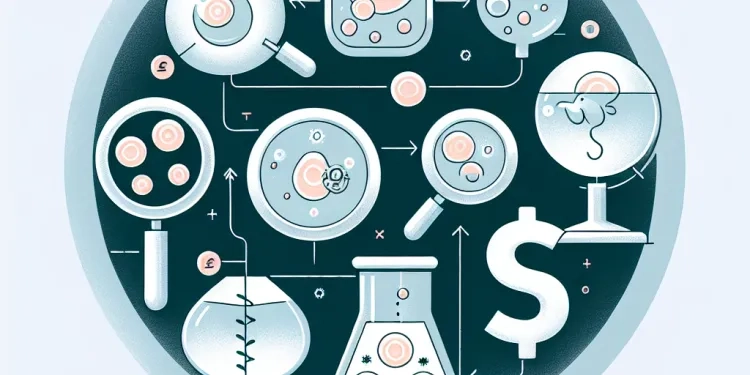
Find Help
More Items From Ergsy search
-

What are the main steps in an IVF cycle?
Relevance: 100%
-

How long does an IVF cycle take?
Relevance: 67%
-
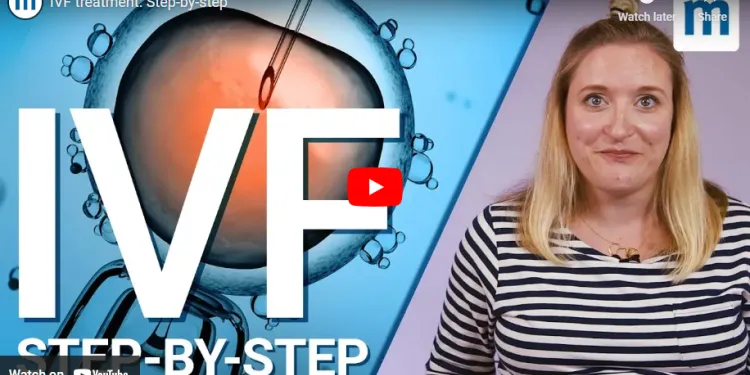
IVF Fertility Treatment from MumsNet
Relevance: 53%
-
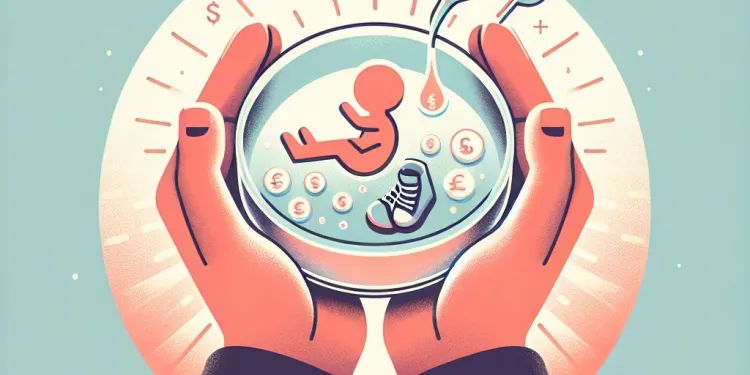
Is IVF successful?
Relevance: 51%
-
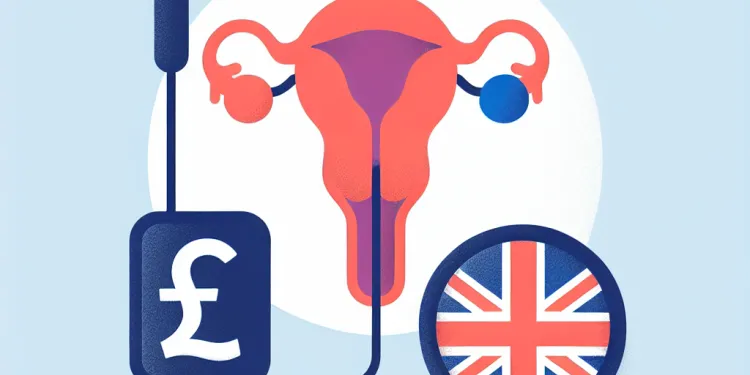
What is IVF?
Relevance: 50%
-

What is IVF and how does it work?
Relevance: 50%
-

Does IVF guarantee pregnancy?
Relevance: 48%
-

How does IVF work?
Relevance: 46%
-

Are there risks associated with IVF?
Relevance: 45%
-

How many embryos are usually transferred in IVF?
Relevance: 42%
-

Does IVF require anesthesia?
Relevance: 42%
-

What should I expect during IVF treatment?
Relevance: 40%
-
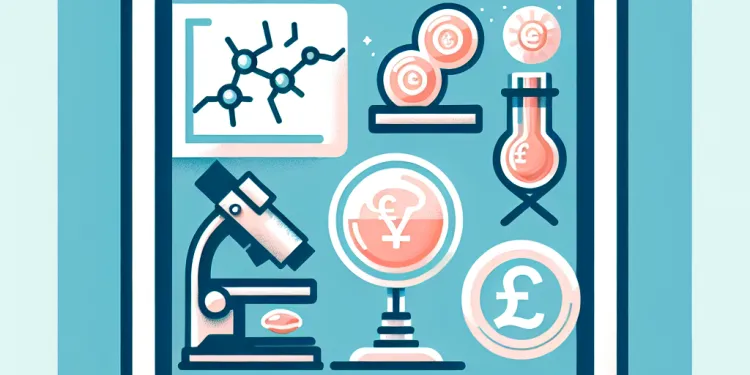
What is the role of the embryologist in IVF?
Relevance: 39%
-
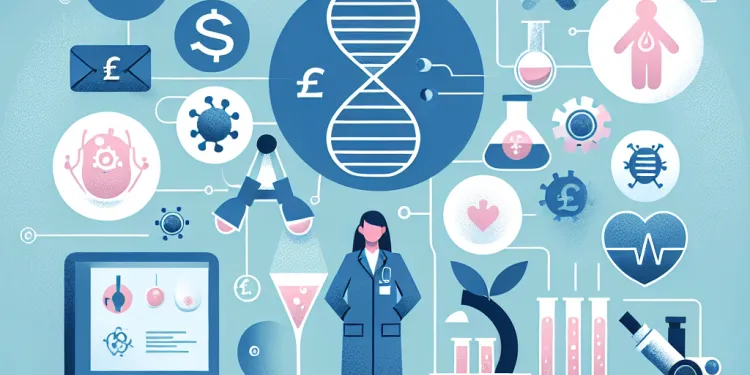
How is the sperm used in IVF?
Relevance: 38%
-

Infertility - IVF Treatment and Patient Information
Relevance: 38%
-
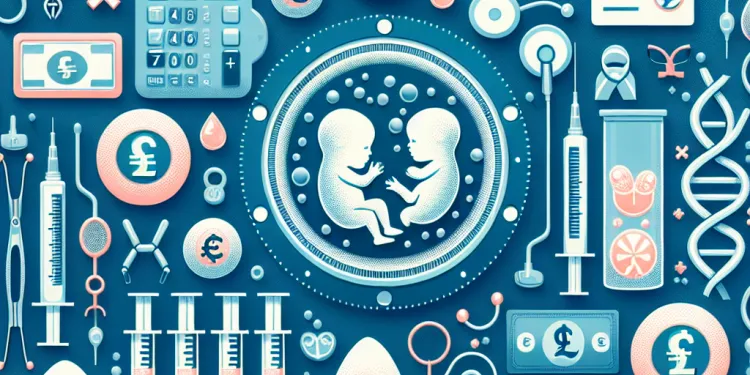
How are embryos transferred during IVF?
Relevance: 37%
-
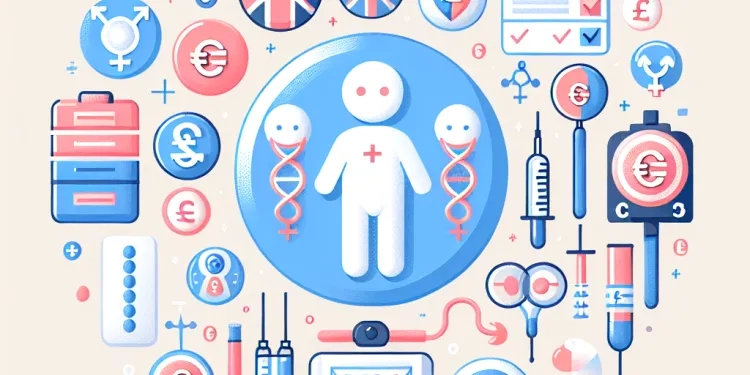
Can IVF be used for gender selection?
Relevance: 37%
-

Who might need IVF?
Relevance: 37%
-
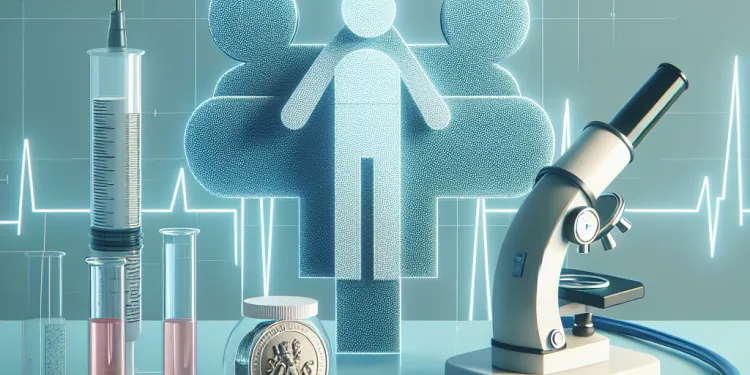
How do clinics determine if IVF is the right option?
Relevance: 35%
-

Can IVF be done with donor eggs or sperm?
Relevance: 35%
-

Is cycling safe during pregnancy?
Relevance: 34%
-

Will the test affect my menstrual cycle?
Relevance: 34%
-

What happens if a water main bursts?
Relevance: 29%
-

How many steps a day should I walk in order to lose weight?
Relevance: 25%
-
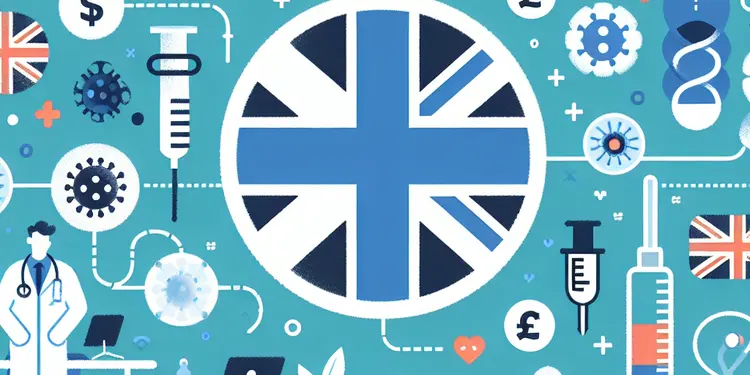
What are the main types of meningitis?
Relevance: 25%
-

What are the main types of eczema?
Relevance: 25%
-

What is the main finding of the study linking screen time to sleep quality?
Relevance: 25%
-

Divorce Step By Step - Form E - Capital
Relevance: 23%
-

What are the main types of sleep apnea?
Relevance: 23%
-

What are the main symptoms of ADHD?
Relevance: 22%
-
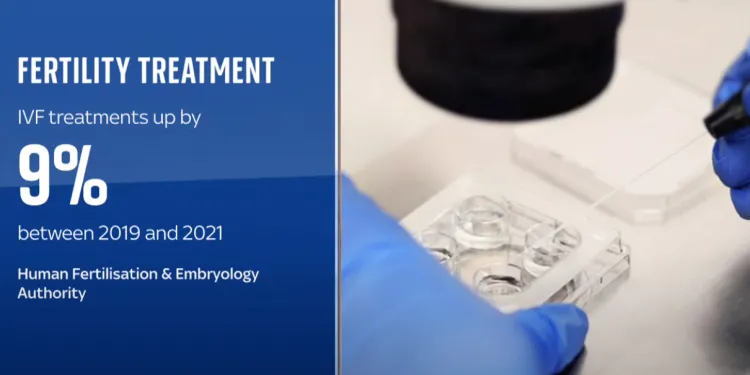
Fertility treatments on the up, but not via the NHS
Relevance: 22%
-

What is the main purpose of the HMRC Employer Bulletin?
Relevance: 21%
-

The 4 Steps to Agree a Financial Settlement on Divorce UK
Relevance: 21%
-

How to apply for NHS funding to treat infertility
Relevance: 20%
-

What is the main reason for the proposed cuts to housing benefits?
Relevance: 20%
-

New Study Reveals Surprising Facts About Daily Step Counts
Relevance: 20%
-

What are the main advantages of PCP over HP?
Relevance: 19%
-
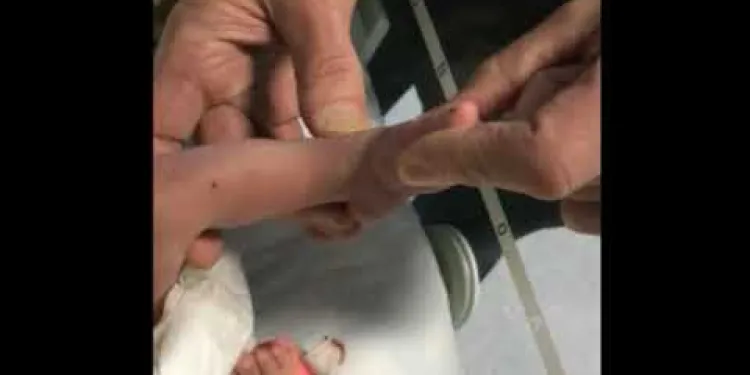
Parent guide to club foot stretches: Step 1
Relevance: 18%
-

Is filing a formal complaint a good step?
Relevance: 17%
-

What steps can I take if my neighbour refuses to reposition their security camera?
Relevance: 17%
Introduction to IVF Cycle
In vitro fertilisation (IVF) is a widely used assisted reproductive technology in the UK that helps individuals and couples conceive. The process involves several crucial steps to increase the chances of a successful pregnancy.
Step 1: Ovulation Induction
The IVF cycle begins with ovulation induction, where the ovaries are stimulated to produce multiple eggs. This is typically achieved through a course of fertility medications that an individual will take over several days. These medications may include follicle-stimulating hormone (FSH) or luteinising hormone (LH), and their purpose is to enhance the number of mature eggs available for retrieval.
Step 2: Monitoring Progress
During ovulation induction, regular monitoring is essential. Fertility specialists conduct ultrasounds and blood tests to assess the development of follicles in the ovaries. This monitoring helps determine when the eggs are ready for retrieval, ensuring optimal timing for the next stage of the process.
Step 3: Egg Retrieval
Once the eggs have matured, they are retrieved from the ovaries. This procedure, known as egg collection or retrieval, is typically carried out under sedation to minimise discomfort. A needle is guided into each ovary using ultrasound technology, and the eggs are gently aspirated from the follicles. Normally, this procedure takes around 20 to 30 minutes.
Step 4: Sperm Collection and Fertilisation
On the day of egg retrieval, sperm is also collected from a partner or a donor. The sperm is then prepared and used to fertilise the eggs in a controlled laboratory environment. Fertilisation can occur through conventional insemination or via intracytoplasmic sperm injection (ICSI), especially in cases where sperm quality is an issue.
Step 5: Embryo Culture
After fertilisation, the fertilised eggs, now called embryos, are cultured and monitored in the laboratory. This phase usually lasts between three to five days. During this time, embryologists observe the development and quality of the embryos, selecting the healthiest ones for transfer.
Step 6: Embryo Transfer
The next step is embryo transfer, where one or more selected embryos are placed into the uterus. This procedure is generally straightforward and painless, not requiring sedation. A thin catheter is used to deliver the embryos into the uterus, aiming for successful implantation.
Step 7: Pregnancy Test
Approximately two weeks after the embryo transfer, a pregnancy test is administered to determine if implantation has occurred and whether the individual is pregnant. This test marks the end of the IVF cycle and the beginning of the next phase, if successful.
Conclusion
IVF is a complex but remarkable process that has enabled many individuals in the UK to conceive. Through careful and systematic steps, IVF can offer hope to those experiencing fertility challenges, providing a structured approach to achieving pregnancy.
Introduction to IVF Cycle
IVF, or in vitro fertilisation, helps people have babies when it's hard to do so naturally. It involves several important steps to help make pregnancy happen.
Step 1: Ovulation Induction
The first step in IVF is ovulation induction. This helps your body make more eggs. To do this, you take special medicines for a few days. These medicines help your body make lots of eggs instead of just one, like usual.
Step 2: Monitoring Progress
During this time, doctors will check how your eggs are growing. They use special machines and tests to see when your eggs are ready. This helps them know the best time to pick the eggs for the next step.
Step 3: Egg Retrieval
When the eggs are ready, doctors collect them. You will be sleepy so it doesn’t hurt. They use a small needle to take the eggs out. This part takes about 20 to 30 minutes.
Step 4: Sperm Collection and Fertilisation
On the same day, they also collect sperm. The sperm is then used to fertilise the eggs in a lab. Sometimes they put a sperm directly into an egg if the sperm has trouble getting in by itself.
Step 5: Embryo Culture
After fertilisation, the eggs become embryos. The embryos stay in the lab for three to five days. During this time, scientists look to see which embryos are the healthiest.
Step 6: Embryo Transfer
Next, doctors put the best embryo into the uterus. This is called embryo transfer. It doesn’t hurt, and you are awake. They use a tiny tube to do this, hoping the embryo will grow into a baby.
Step 7: Pregnancy Test
Two weeks later, you take a pregnancy test to see if you are pregnant. This is the last step to find out if the IVF worked.
Conclusion
IVF is a special way to help people who find it hard to have a baby. By following these steps, many people in the UK have been able to start families.
Frequently Asked Questions
What constitutes the initial consultation in an IVF cycle?
The initial consultation involves meeting with a fertility specialist to discuss medical history, perform preliminary evaluations, and outline a personalized IVF treatment plan.
Why is ovarian stimulation important in IVF?
Ovarian stimulation is important as it encourages the ovaries to produce multiple eggs, increasing the chances of successful fertilization and embryo development.
What medications are commonly used during ovarian stimulation?
Common medications include fertility hormone injections like FSH (follicle-stimulating hormone), LH (luteinizing hormone), and GnRH (gonadotropin-releasing hormone) analogs.
How are eggs retrieved during an IVF cycle?
Egg retrieval is done through a minor surgical procedure called transvaginal ultrasound aspiration, where a needle is inserted through the vaginal wall to extract eggs from the ovaries.
What happens during the fertilization and embryo culture stage?
Retrieved eggs are combined with sperm in a laboratory setting to facilitate fertilization. The resulting embryos are cultured in an incubator to grow for a few days.
What is the embryo transfer procedure in IVF?
Embryo transfer involves placing one or more embryos into the uterine cavity through the cervix using a thin catheter. This is usually done a few days after egg retrieval.
Why is luteal phase support necessary in IVF?
Luteal phase support helps maintain uterine lining stability and promote implantation using progesterone supplements, since stimulated cycles may not produce enough naturally.
What is the purpose of the pregnancy test in IVF?
The pregnancy test, usually performed 10-14 days after embryo transfer, determines if implantation was successful and pregnancy has begun.
How are IVF cycles individualized for patients?
IVF cycles are individualized based on factors such as age, ovarian reserve, reproductive history, and underlying health conditions to maximize success rates.
What role does sperm preparation play in IVF?
Sperm preparation involves selecting the most viable sperm, often using techniques like washing and centrifugation, to optimize fertilization chances with retrieved eggs.
Can genetic testing be part of an IVF cycle?
Yes, genetic testing such as PGT-A or PGT-M can be conducted on embryos to screen for chromosomal abnormalities or specific genetic disorders before transfer.
What are the monitoring protocols during ovarian stimulation?
Monitoring includes regular blood tests and ultrasounds to track hormone levels and follicle development, ensuring appropriate response to medications.
What are some potential side effects of IVF medications?
Potential side effects include bloating, mood swings, headaches, and in rare cases, Ovarian Hyperstimulation Syndrome (OHSS).
How long does the entire IVF cycle take?
An IVF cycle typically takes about four to six weeks from the start of ovarian stimulation to the pregnancy test.
What happens if there are surplus embryos after the transfer?
Surplus embryos can be cryopreserved (frozen) for future use, reducing the need for ovarian stimulation in later cycles.
Can lifestyle impact IVF success?
Yes, factors like maintaining a healthy weight, avoiding tobacco and excessive alcohol, and managing stress may influence IVF success.
Why is the endometrial lining important in IVF?
The endometrial lining must be appropriately thick and healthy to support embryo implantation and subsequent pregnancy.
What factors are considered when selecting embryos for transfer?
Factors include embryo grading based on development, quality, and genetic screening results, if available.
Is there a recovery period after egg retrieval?
There may be a short recovery period involving rest and mild discomfort, but most patients can resume normal activities within a day or two.
What happens if the IVF cycle is unsuccessful?
If unsuccessful, follow-up consultations help determine the next steps, which may include reviewing treatment options or adjusting future IVF cycles.
What happens at the first IVF meeting?
The first IVF meeting is the time when you talk to the doctor. They will explain how IVF works. You can ask questions and learn what to expect. Bring a friend or family member if it helps you feel more comfortable.
It is helpful to write down your questions before you go. You can also use pictures or drawings to understand better. The doctor is there to help you, so don't be afraid to speak up!
The first meeting is with a doctor who helps people have babies. You will talk about your health history, do some basic tests, and get a special plan just for you to help you have a baby.
Why do doctors use medicine to help ovaries in IVF?
Ovarian stimulation helps the ovaries make more eggs. This is important because it gives a better chance for the eggs to be fertilized and develop into embryos.
What medicines are used to help ovaries make eggs?
There are common medicines to help with having a baby. These medicines are given as injections. They have special hormones:
- FSH - This helps eggs grow in the ovaries.
- LH - This makes the eggs get ready to release.
- GnRH - This helps control when eggs are released.
If you find reading hard, you can try using audiobooks or ask someone to read to you for extra help.
How do doctors collect eggs in an IVF cycle?
Doctors use a special procedure to collect eggs from a woman's body. They do this to help make a baby. Here is how it works:
1. The woman takes some medicine to help her body make more eggs.
2. When the eggs are ready, the doctor uses a tiny needle to take them out. The woman will usually be asleep or relaxed so it does not hurt.
3. The doctor uses an ultrasound machine to see inside the body and find the eggs.
This is an important part of IVF, which helps many people have children.
If you have more questions, you can ask your doctor or use picture books to understand better.
Egg retrieval is a small surgery. It's called transvaginal ultrasound aspiration. A doctor uses a needle to get the eggs from the ovaries. The needle goes through the wall of the vagina to get the eggs out.
What happens during the baby-making and growing stage?
The baby-making and growing stage is when a tiny baby starts to form.
First, a cell from a man (sperm) meets a cell from a woman (egg). They join together.
This makes a baby cell called an embryo.
This embryo needs a safe place to grow.
Doctors often put the embryo in a special warm place to help it grow strong.
Once it grows a little, it can be put into the woman’s tummy to grow into a baby.
Some people find it helpful to look at pictures or videos to understand how babies start to grow.
The eggs are taken and mixed with sperm in a special lab. This helps them come together to make tiny babies, called embryos. These tiny babies then grow in a warm place for a few days.
What happens during embryo transfer in IVF?
Embryo transfer is a step in IVF. It is when a doctor puts a tiny baby (called an embryo) into a woman's womb. This helps her get pregnant.
Here are the steps:
- The doctor uses a thin tube to gently place the embryo in the womb.
- The woman might need to rest for a little bit afterwards.
- The doctor will check later to see if the embryo is growing into a baby.
Helpful tips:
- Ask questions if you don’t understand.
- Bring someone with you for support.
- Use pictures or videos to help understand the process.
Embryo transfer means putting tiny embryos into the womb. This is done through the cervix. A doctor uses a small tube to do this. Usually, this happens a few days after eggs are taken out.
Why do we need to help the luteal phase in IVF?
When doing IVF, we need to make sure the body is ready for a baby to grow. The luteal phase is a part of this process. It is important to help the body during this time so that the baby can grow well.
Doctors give special medicine to help the body during the luteal phase. This is called luteal phase support. It helps the body make a good home for the baby.
If you want help reading about IVF, you can use text-to-speech tools or ask someone to explain it to you.
Luteal phase support helps keep the womb lining strong and helps a fertilized egg stick. It uses progesterone medicine because sometimes the body does not make enough by itself during treatment.
Why do you need a pregnancy test with IVF?
A pregnancy test tells you if you are having a baby.
In IVF, doctors use this test to check if the treatment worked.
If the test is positive, it means you might have a baby growing inside you.
To help understand this, you can:
- Use pictures or drawings.
- Ask someone to read it with you.
- Break it down into small parts.
You take a pregnancy test 10 to 14 days after putting the embryo in. This test shows if the embryo is in place and if a baby is starting to grow.
How is IVF treatment made special for each person?
Doctors make IVF treatment just for you. They do this because everyone is different. Here is how they do it:
- Talk with you: Doctors ask about your health. They want to know what you need.
- Check your body: Doctors may do tests. This helps them see what your body needs.
- Make a plan: Doctors make a special plan for you. This plan helps you have the best chance to have a baby.
If you have questions, it’s okay to ask the doctor. You can use pictures or videos to help understand the information better.
Each IVF treatment is made just for you. This is based on things like how old you are, how many eggs you have, any past pregnancies, and your health. This helps the treatment work better.
Why is sperm preparation important in IVF?
IVF is a way to help people have babies. It stands for "in vitro fertilization."
Sperm preparation is an important step in IVF. It makes sure the sperm is healthy and ready to meet the egg.
Doctors get the sperm ready in special ways. This helps the IVF process work better.
If you want to learn more, tools like videos or pictures can help. A doctor can also explain each step to you.
Sperm preparation is a way to pick the best sperm to help make a baby. People often wash and spin the sperm to make sure they use the healthiest ones. This helps the sperm join with the eggs better.
Can you use genetic testing with IVF?
Genetic testing can be used with IVF. This means looking at genes to check for health problems. It can help choose healthy embryos.
If you're curious about this, ask your doctor. They can explain how it works.
Using pictures or videos can help understand things better. A family member or friend can also help explain.
Yes, doctors can do a test on embryos to check for problems with their genes or chromosomes before the embryo is put in the womb.
How do doctors check your health during ovary treatment?
Doctors watch you closely during ovary treatment. They do this to keep you safe and make the treatment work well.
Here is how they check your health:
- Blood Tests: Doctors take some blood. They check it for changes. This helps them know if your body is okay.
- Scans: Doctors use a special camera. It looks inside your body. They check your ovaries to see how they are doing.
- Appointments: You visit the doctor. They talk to you about how you feel.
If you have questions, ask your doctor. They can help.
Some things that can help when reading:
- Use a dictionary: A dictionary can help with hard words.
- Read slowly: Take your time. You do not need to hurry.
- Ask someone for help: A friend or family member can read with you.
Doctors do regular blood tests and ultrasounds to check how your body is doing. They look at hormone levels and watch how things are growing. This helps them see if the medicine is working well.
What are the possible side effects of IVF medicine?
You might feel some side effects. These can be a full tummy, changes in mood, headaches, and sometimes a problem called Ovarian Hyperstimulation Syndrome (OHSS), but this is rare.
How long does IVF take?
IVF is a way to help people have a baby. It takes time. From start to finish, IVF can take about 4 to 6 weeks. But it can take longer for some people.
Here's what happens:
- First, you visit the doctor to talk about IVF.
- Then, you take medicine to help your body get ready.
- Next, the doctor collects eggs from your body.
- After that, the eggs are mixed with sperm to make embryos.
- Finally, the doctor puts an embryo in your body to help you get pregnant.
You can use tools like calendars to help you keep track of the time. It's okay to ask the doctor questions if you need help.
An IVF cycle usually takes about 4 to 6 weeks. It starts with medicine to make the ovaries work and ends with a test to see if you are pregnant.
What do we do with extra embryos after the transfer?
Extra embryos can be frozen. This means they can be saved for later. If you want a baby later, you might not need more medicine to help get eggs ready.
Can the way you live affect IVF success?
Yes, things like keeping a healthy weight, not smoking, not drinking too much alcohol, and handling stress can help IVF work better.
Why is the Endometrial Lining Important in IVF?
The endometrial lining is the inside layer of the uterus (the place where a baby grows). This lining needs to be thick and healthy for a baby to start growing.
In IVF (a way to help people have a baby), the doctor puts a fertilized egg into the uterus. The fertilized egg needs to stick to the endometrial lining to grow into a baby.
If the endometrial lining is not thick enough, it might be hard for the egg to stick and grow.
To help understand this better, you can use pictures or videos. Talking to a doctor can also give you more information.
The lining inside the womb needs to be thick and healthy. This helps a baby to start growing there.
What things are looked at when choosing embryos to use?
When doctors look at embryos, they check a few things. They look at how well the embryo is growing, how good it looks, and if any tests were done on its genes.
Do you need time to rest after taking eggs out?
You might need a little time to rest and feel better. You could feel a bit uncomfortable, but that's okay. Most people can go back to doing their usual things in a day or two.
What if IVF does not work?
Sometimes, IVF might not work the first time. This is okay, because you can try again. Here are some things that could help:
- Talk to your doctor: They can help you understand what happened and what to do next.
- Take care of yourself: Eat healthy food, rest well, and do things that make you happy.
- Join a support group: Meeting others who have similar experiences can be comforting.
- Think about trying again: Talk to your doctor about when it might be a good time to try IVF again.
- Ask about other options: There might be other treatments that could help.
If the IVF treatment does not work, you can have another meeting with the doctor. This meeting will help decide what to do next. You might look at different treatment options or change how you do IVF the next time.
Useful Links
- Ergsy carfully checks the information in the videos we provide here.
- Videos shown by Youtube after a video has completed, have NOT been reviewed by ERGSY.
- To view, click the arrow in centre of video.
- Most of the videos you find here will have subtitles and/or closed captions available.
- You may need to turn these on, and choose your preferred language.
- Go to the video you'd like to watch.
- If closed captions (CC) are available, settings will be visible on the bottom right of the video player.
- To turn on Captions, click settings .
- To turn off Captions, click settings again.
More Items From Ergsy search
-

What are the main steps in an IVF cycle?
Relevance: 100%
-

How long does an IVF cycle take?
Relevance: 67%
-

IVF Fertility Treatment from MumsNet
Relevance: 53%
-

Is IVF successful?
Relevance: 51%
-

What is IVF?
Relevance: 50%
-

What is IVF and how does it work?
Relevance: 50%
-

Does IVF guarantee pregnancy?
Relevance: 48%
-

How does IVF work?
Relevance: 46%
-

Are there risks associated with IVF?
Relevance: 45%
-

How many embryos are usually transferred in IVF?
Relevance: 42%
-

Does IVF require anesthesia?
Relevance: 42%
-

What should I expect during IVF treatment?
Relevance: 40%
-

What is the role of the embryologist in IVF?
Relevance: 39%
-

How is the sperm used in IVF?
Relevance: 38%
-

Infertility - IVF Treatment and Patient Information
Relevance: 38%
-

How are embryos transferred during IVF?
Relevance: 37%
-

Can IVF be used for gender selection?
Relevance: 37%
-

Who might need IVF?
Relevance: 37%
-

How do clinics determine if IVF is the right option?
Relevance: 35%
-

Can IVF be done with donor eggs or sperm?
Relevance: 35%
-

Is cycling safe during pregnancy?
Relevance: 34%
-

Will the test affect my menstrual cycle?
Relevance: 34%
-

What happens if a water main bursts?
Relevance: 29%
-

How many steps a day should I walk in order to lose weight?
Relevance: 25%
-

What are the main types of meningitis?
Relevance: 25%
-

What are the main types of eczema?
Relevance: 25%
-

What is the main finding of the study linking screen time to sleep quality?
Relevance: 25%
-

Divorce Step By Step - Form E - Capital
Relevance: 23%
-

What are the main types of sleep apnea?
Relevance: 23%
-

What are the main symptoms of ADHD?
Relevance: 22%
-

Fertility treatments on the up, but not via the NHS
Relevance: 22%
-

What is the main purpose of the HMRC Employer Bulletin?
Relevance: 21%
-

The 4 Steps to Agree a Financial Settlement on Divorce UK
Relevance: 21%
-

How to apply for NHS funding to treat infertility
Relevance: 20%
-

What is the main reason for the proposed cuts to housing benefits?
Relevance: 20%
-

New Study Reveals Surprising Facts About Daily Step Counts
Relevance: 20%
-

What are the main advantages of PCP over HP?
Relevance: 19%
-

Parent guide to club foot stretches: Step 1
Relevance: 18%
-

Is filing a formal complaint a good step?
Relevance: 17%
-

What steps can I take if my neighbour refuses to reposition their security camera?
Relevance: 17%